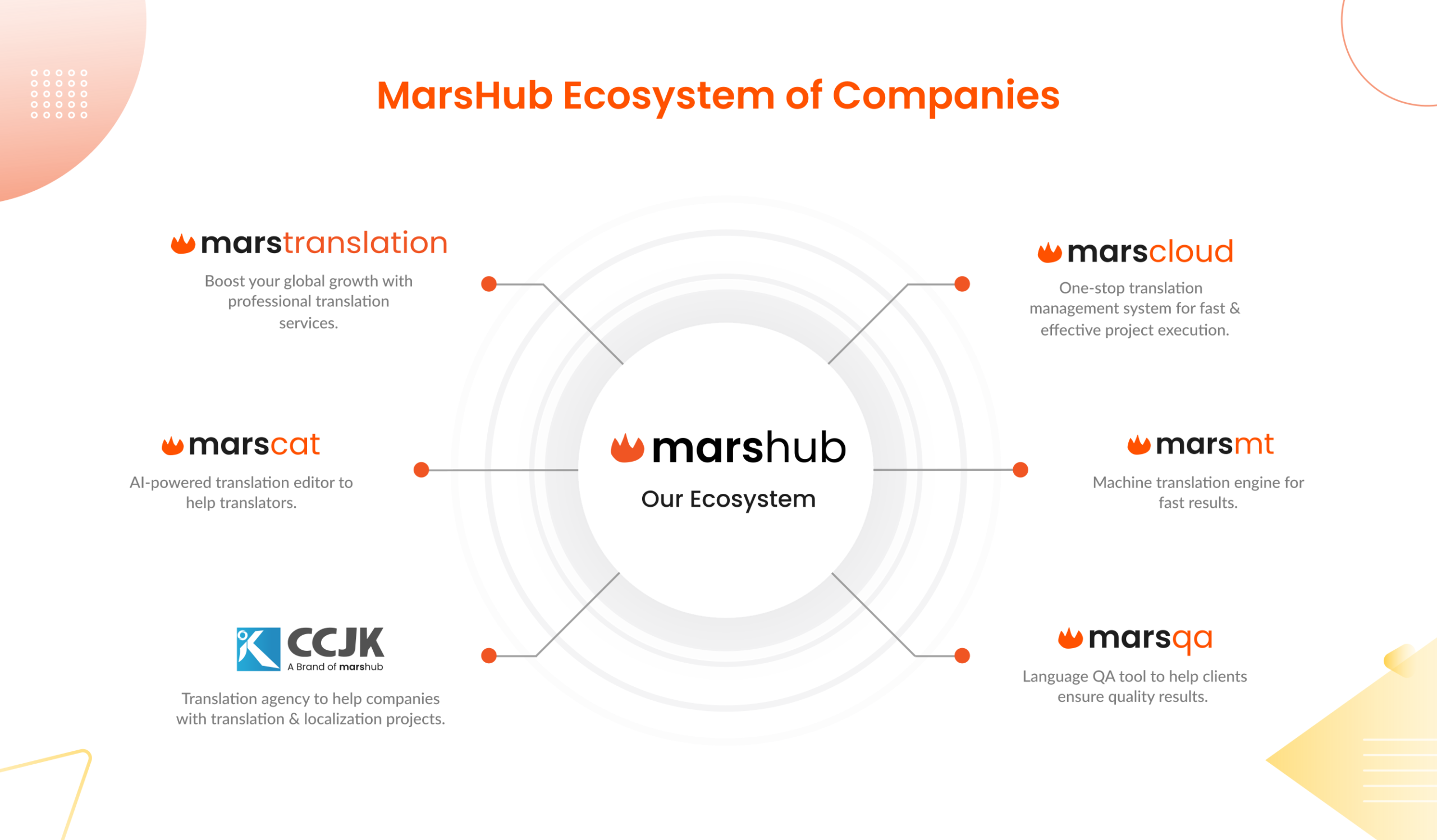Every day we see several examples of localization around us. Even if you are not running a global business, you may still encounter localization in your everyday life.
Have you ever purchased something online from a Japanese brand, when you don’t even speak the Japanese language? Thanks to brand localization it has made it possible for brands to reach out to international audiences by adapting their brands to local preferences and needs.
However, localization is not that simple, you have to do extensive market research to pull it off correctly. In this article, we’ll try to go deeper into localization, to understand how things actually work and the right approach to make things go right for your brand in a foreign market.
Who Needs Localization?
It is true that some businesses can function totally fine without getting into localization. It depends on your business type, customer demographics, and how big your brand name is. Not to say that big brands don’t do localization, but you have to figure out what you actually need to localize. You may not need to localize your brand fully, or maybe translating the textual content is enough for you. Similarly, in other cases, you may have to go all out to make things work for you in a foreign market.
So, it’s about understanding what your customers truly value and investing in optimizing their brand experience through localization.
Understanding The Science Behind Localization
Localization is a broad concept that deals with all aspects of your brand, be it linguistic, cultural, or visual. In this article, we are dividing localization into four main categories that deal with your product’s message, experience, code (website, software, & app), and framework. So, let’s get straight into it.
Localizing the Message
First thing first, you must mold your brand message in a way that precisely communicates to your audience what you are actually offering. There are several factors that you must keep in mind while localizing your brand message for target regions.
1. Language
Targeting markets where your target customers don’t speak your original brand language, translation is a compulsion. Linguistic gaps can lead to a lack of brand understanding, and your customers may not comprehend what you are standing for. So, eliminating the language barrier is the first thing you need to tackle through a robust international content localization strategy. When you translate your brand into the local language, it allows the customers to feel more comfortable buying from you. For managing high translation volumes, you can get your hands on a professional translation management system.
2. Tone
You have to be very careful while translating for your international brand, and make sure the tone is consistent. It sometimes gets hard to maintain your brand voice consistency when multiple translators are working on your translation projects. To avoid this problem, you must create glossaries for translation project management and distribute them among all translators. It will allow your translation team to get a clear idea about what you want to achieve and how your brand must sound.
3. Context
Again, making your translation requirements clear to the translation team is significant to achieve your localization goals. You must hire professional native translators to manage your translations because they have linguistic proficiency and sufficient cultural exposure to generate in-context translations. In short, all of your translations should make sense put together and give the right impression of the brand.
4. Relevance
You have to write different brand stories for different markets, based on what matters to your customers and their fascinations. Slightly twisting your brand messaging, and making it relevant to your target customers can significantly increase your brand engagement. Such a way of crafting your brand translation will help you connect with the global masses and motivate them to buy from you. It is more about creating influence through effective translation that deeply resonates with your customers.
Localizing the Experience
Moving forward, there is so much more to localization. Like translations, there are many other aspects of the brand that contribute to creating a good or bad user experience. Here are some factors you must consider while localizing your UX experience.
1. Interface
Whether you are selling home appliances through an e-commerce store, or SaaS software, the user interface of your website or app hugely contributes to the user brand experience. The whole idea of localizing the interface is to make it easier for your customers to navigate through the website or app, so they can find the information they require seamlessly. It will also lead to a reduced bounce rate that’ll improve your search engine rankings. So, localizing the user interface is a key part of software and eCommerce localization.
2. Formatting
Adapting the formatting of different user-facing elements, such as date, time, and currency is also an important thing to consider. For any target market, make sure you are using suitable formatting that is more familiar to your user. Similarly, the form formats will be different for every region. For instance, in most English-speaking countries people are mostly familiar with first name + family name, whereas in Spanish-speaking countries, it is first name + paternal family name + maternal family name. You must keep in mind your users’ preferences and recreate your user-facing elements in the right formatting.
3. Imagery
The visual elements in your website, app, or software have the most influence on your users, and it can greatly affect their overall brand experience. Redesigning and localizing the graphics, images, and videos is also a crucial part of adapting the overall brand experience. From using the right colors to putting relevant cultural references, you must make sure that your visual elements reflect the local culture and complement the social norms and beliefs. Moreover, if you are translating the website or software content, the content on images must be translated as well. Similarly, if there are any videos, make sure to dub them into local languages, or at least provide subtitles.
4. Payment Method
Another important thing about creating an incredible localized user experience is to make it seamless for them to proceed with their purchases. For this, you have to make sure that the process of buying is easy and quick. Asking for excessive information and making your customers click a lot of buttons frustrate them, and they may drop the idea of buying from you. It is better to support different payment methods if possible; otherwise, for every region you must use a payment method that is more familiar and commonly used in the region. Some countries don’t use certain payment methods, so you better be aware of them and provide support for suitable payment methods for each region.
Localizing the Code
If you are digitally selling products and services, or dealing in SaaS software or gaming domain, you must know that localization goes deeper into the coding part. So, you must be very mindful about approaching the development side of localization right.
1. Hard-coding
It is mostly referred to as internationalization when you develop your website, and software using best localization practices. For this, you must not hardcode any user-facing elements inside the code, and use external strings instead. It becomes very complicated and time-consuming to localize your software, apps, and websites later if they are not already internationalized. You developers have to extract the strings from code that needs to be localized. Similarly, translators may also find it hard to extract the text from the code. Internationalization makes the localization process seamless and smooth for the localization team.
2. Design
You may make your website and software ready to be localized, and create a design that is flexible enough to be easily adapted. For instance, we know that some languages take up more space than others. If your design is not flexible, each time you’re translating to another language, it will create a mess on your web pages. To avoid this, you must focus on creating a flexible website design that can shrink or expand based on other changes made to the web interface. You can use localization management software and integrate it with your website to manage all changes from one place.
3. Pseudo-localization
It is a known technique used to evaluate string externalization. Here you convert your software and website character into another language, using another set of characters. It’s a good way to test whether or not your code supports localization. It is an important step, in which you can identify all the challenges that you may face with strings. This way, developers can get an idea about how their product will look when translated into another language.
Localizing the Framework
You must globalize your software, or website by generalizing your content, interface, design, and other elements. It will make your website ready for localization, and you don’t have to make a lot of changes in the original framework.
1. Unicode
When you already know that you will be localizing your software or website for different platforms, regions, and languages, you must create the original version of your product using Unicode. The idea is to make your product ready for different markets with little changes required. You must hire developers who are familiar with Unicode and help you build a website or software on the “think global- act local” principle. It is like creating a globalized version of your website that doesn’t contain any hard-core cultural or linguistic references, which may be challenging for your localization team to deal with later.
2. Image File Structure
When you are creating image files in some design software, you must not provide your LSP partners any access to the final files. Instead, you must give them access to the source files. Similarly, if you are using some design software, like Canva, you also need to provide access to localization partners. So, all the images can be redesigned for different regions for localization purposes.
In the development stage, you don’t really need to decide what to swap and what to hide. At this point, the only thing you need to be aware of is, that you must not put images where you may not be able to extract the text to hide or swap. So, you must ensure design flexibility.
3. Database Schema
What if your code or database technology doesn’t support the international use case? So, you may localize the strings but the database schema can be adapted. To avoid this issue, you better contact a professional LSP in the UX research stage, before getting into any coding. It is crucial to have databases that support the use cases of different countries. So, there is no need to change the database structure anytime you want to localize. It will make your localization much easier and you may only need to add or alter a few fields only. You can easily identify such issues in your software or website framework by doing pseudo localization.
Summing Up!
Localization helps you to adapt your product for foreign markets and smoothly grow your business in the global landscape. However, understanding the art and science behind localization is significant to make things go fine and smooth in international markets. Make sure to adapt your brand fully from messaging, and design, to user experience and framework. Having the right knowledge and understanding of the latest methods can help you carry out your localization project effortlessly and reduce the chances of errors and failures.



